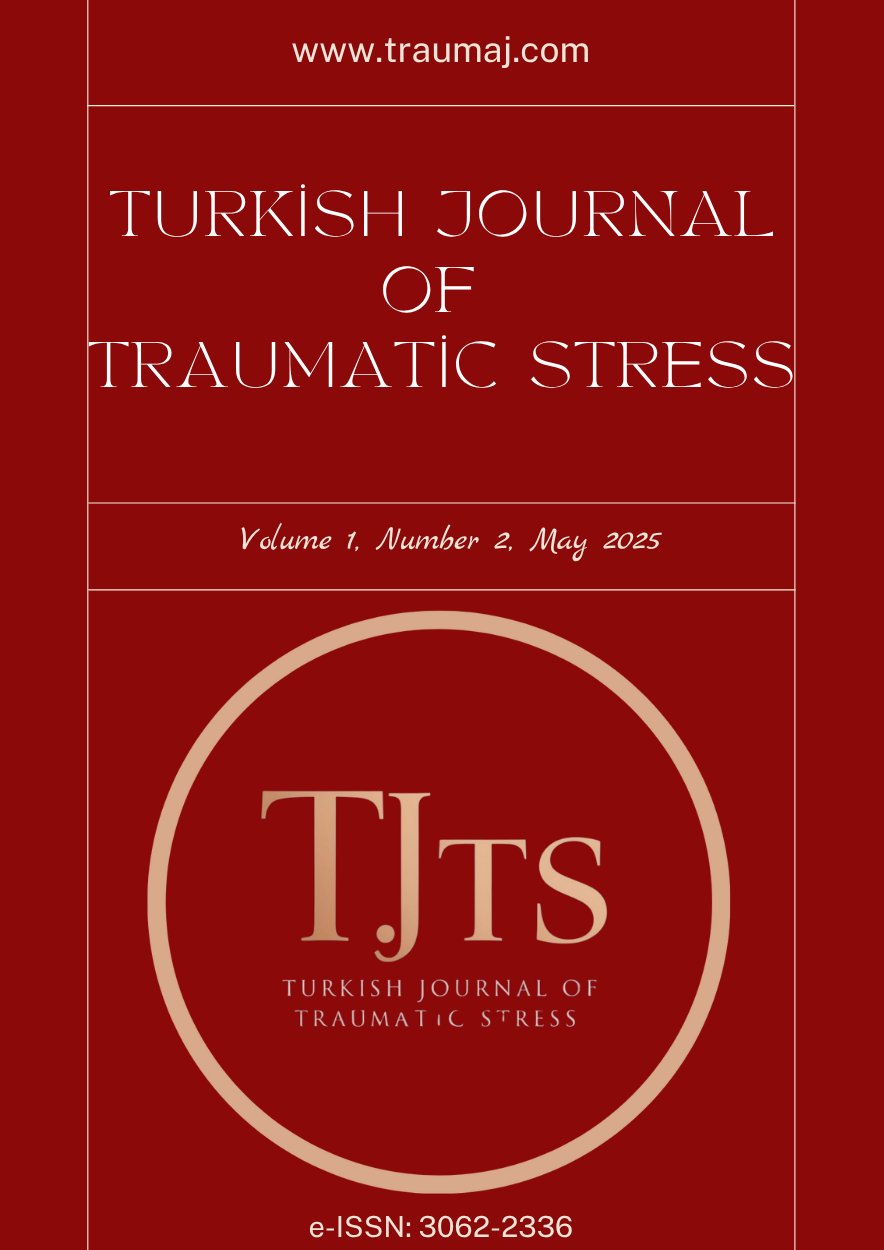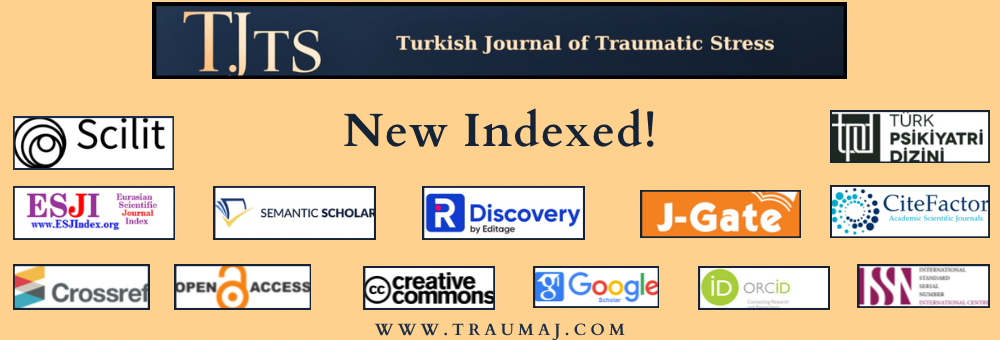The Impact of Childhood Trauma Subtypes on Depression Severity: A Structural Equation Model Analysis
Impact of Childhood Trauma Subtypes on Depression Severity
DOI:
https://doi.org/10.63175/tjts.20Keywords:
childhood trauma, depression severity, emotional neglect, structural equation modeling, major depressive disorderAbstract
Background: Childhood trauma is a recognized risk factor for major depressive disorder (MDD); however, fewer studies have examined how specific trauma subtypes relate to the severity of depressive symptoms. This study aimed to investigate both the overall impact of childhood trauma and the differential effects of trauma subtypes on depression severity in individuals diagnosed with MDD.
Methods: Sixty-five participants (64.6% female) diagnosed with MDD according to DSM-5 criteria completed the Childhood Trauma Questionnaire (CTQ) and the Beck Depression Inventory (BDI). Structural equation modeling (SEM) was conducted to examine the predictive relationship between childhood trauma and depression severity.
Results: Emotional neglect was the most prevalent trauma subtype and showed the strongest association with depression severity. SEM analysis revealed a strong predictive relationship between childhood trauma and depressive symptoms (standardized regression coefficient = 0.70). While emotional abuse, physical abuse, and physical neglect were also positively correlated with depression severity, no significant association was found for sexual abuse.
Conclusion: The findings highlight the profound impact of emotional neglect on depression severity in individuals with MDD. Early screening for emotional trauma and trauma-informed interventions are critical for mitigating the long-term psychological consequences of childhood adversity. Future research should further investigate the moderating roles of social support and psychological resilience.
This article’s short podcast by AI (English)
This article’s short podcast by AI (Turkish)
References
1. Liu Q, He H, Yang J, Feng X, Zhao F, Lyu J. Changes in the global burden of depression from 1990 to 2017: Findings from the Global Burden of Disease study. Journal of psychiatric research. 2020;126:134-140.
2. World Health Organization. Mental Health Atlas 2020: Review of the Eastern Mediterranean Region. Geneva, Switzerland: World Health Organization; 2022.
3. Lynch CJ, Gunning FM, Liston C. Causes and consequences of diagnostic heterogeneity in depression: paths to discovering novel biological depression subtypes. Biological psychiatry. 2020;88(1):83-94.
4. Heim C, Newport DJ, Mletzko T, Miller AH, Nemeroff CB. The link between childhood trauma and depression: insights from HPA axis studies in humans. Psychoneuroendocrinology. 2008;33(6):693-710.
5. Murphy F, Nasa A, Cullinane D, et al. Childhood trauma, the HPA axis and psychiatric illnesses: a targeted literature synthesis. Frontiers in psychiatry. 2022;13:748372.
6. Kuzminskaite E, Vinkers CH, Milaneschi Y, Giltay EJ, Penninx BW. Childhood trauma and its impact on depressive and anxiety symptomatology in adulthood: A 6-year longitudinal study. Journal of affective disorders. 2022;312:322-330.
7. Kuzminskaite E, Penninx BW, Van Harmelen A-L, Elzinga BM, Hovens JG, Vinkers CH. Childhood trauma in adult depressive and anxiety disorders: an integrated review on psychological and biological mechanisms in the NESDA cohort. Journal of affective disorders. 2021;283:179-191.
8. Beck AT, Ward CH, Mendelson M, Mock J, Erbaugh J. An inventory for measuring depression. Archives of general psychiatry. 1961;4(6):561-571.
9. Hisli N. A reliability and validity study of Beck Depression Inventory in a university student sample. Turkish J Psychol. 1989;7:3-13.
10. Bernstein DP, Fink L, Handelsman L, Foote J. Childhood Trauma Questionnaire. In: Kantor GK, Jasinski JL, eds. Assessment of Family Violence: A Handbook for Researchers and Practitioners. Thousand Oaks, CA: Sage Publications; 1998.
11. Şar V, Öztürk PE, İkikardeş E. Çocukluk çağı ruhsal travma ölçeğinin Türkçe uyarlamasının geçerlilik ve güvenilirliği. Turk Klin J Med Sci. 2012;32(4):1054-1063.
12. Mandelli L, Petrelli C, Serretti A. The role of specific early trauma in adult depression: A meta-analysis of published literature. Childhood trauma and adult depression. Eur psychiatry. 2015;30(6):665-680.
13. Zhang S, Lin X, Yang T, et al. Prevalence of childhood trauma among adults with affective disorder using the Childhood Trauma Questionnaire: a meta-analysis. J Affect Disord. 2020;276:546-554.
14. Maniglio R. Child sexual abuse in the etiology of depression: A systematic review of reviews. Depress Anxiety. 2010;27(7):631-642.
15. McKay MT, Cannon M, Chambers D, et al. Childhood trauma and adult mental disorder: A systematic review and meta‐analysis of longitudinal cohort studies. Acta Psychiatr Scand. 2021;143(3):189-205.
16. Dworkin ER, Menon SV, Bystrynski J, Allen NE. Sexual assault victimization and psychopathology: A review and meta-analysis. Clin Psychol Rev. 2017;56:65-81.
17. Angelakis I, Gooding P. Associations of anxiety and depression with suicide experiences in individuals with and without childhood trauma: The role of social support. Psychiatry Res. 2022;309:114424.
18. Chang J-J, Ji Y, Li Y-H, Yuan M-Y, Su P-Y. Childhood trauma and depression in college students: Mediating and moderating effects of psychological resilience. Asian J Psychiatry. 2021;65:102824.
19. Thielemann J, Kasparik B, König J, Unterhitzenberger J, Rosner R. A systematic review and meta-analysis of trauma-focused cognitive behavioral therapy for children and adolescents. Child Abuse Negl. 2022;134:105899.
20. Dominguez SK, Matthijssen SJ, Lee CW. Trauma-focused treatments for depression. A systematic review and meta-analysis. PLoS One. 2021;16(7):e0254778.
21. Duberstein PR, Ward EA, Chaudron LH, et al. Effectiveness of interpersonal psychotherapy-trauma for depressed women with childhood abuse histories. Journal of consulting and clinical psychology. 2018;86(10):868.
Published
How to Cite
Issue
Section
License
Copyright (c) 2025 Hasan Ünver, Safiye Zeynep Tatlı

This work is licensed under a Creative Commons Attribution 4.0 International License.








